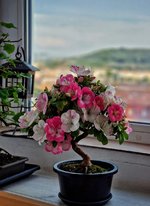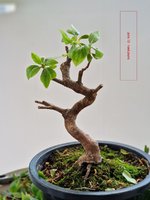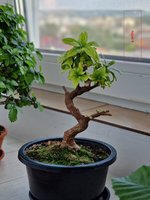Hello,
This year I did hard cutbacks on several of my azalea trees. I have 10 or so. Most of them have responded remarkably well, and are already covered with their post-bloom-cutback growth.
The cutback was done back in early June/late May, after flowering. The problem I'm having is that three of them have not responded well... they haven't responded at all. These were all vigorous trees so I'm not really sure what I did wrong and if there's anything I can do to save them at this point. On two of them, I still have not witnessed a single bud anywhere. One has had very sparse buds forming, but they are few and far between, and don't really seem to be getting bigger or spreading around the tree. At this point, it seems like they are dead, but the roots look kind of OK?
I live in Orange County CA. The climate here between June and September is mostly just dry, warm-hot days. All of my azalea trees get heavy shade this time of year, including the ones that have vigorously recovered from the cutback. Is there any chance that they recover?
Two of the three are kind of special to me, so I am a bit sad about this. I can go on with my life having killed these, but not if I have no clue what I did wrong. That will drive me absolutely crazy. I feel like I was very careful with watering, and indeed 'most' of them have thrived after. But obviously I did something wrong, or have a very secretive disease on my hands to deal with. Any advice is highly appreciated.
This year I did hard cutbacks on several of my azalea trees. I have 10 or so. Most of them have responded remarkably well, and are already covered with their post-bloom-cutback growth.
The cutback was done back in early June/late May, after flowering. The problem I'm having is that three of them have not responded well... they haven't responded at all. These were all vigorous trees so I'm not really sure what I did wrong and if there's anything I can do to save them at this point. On two of them, I still have not witnessed a single bud anywhere. One has had very sparse buds forming, but they are few and far between, and don't really seem to be getting bigger or spreading around the tree. At this point, it seems like they are dead, but the roots look kind of OK?
I live in Orange County CA. The climate here between June and September is mostly just dry, warm-hot days. All of my azalea trees get heavy shade this time of year, including the ones that have vigorously recovered from the cutback. Is there any chance that they recover?
Two of the three are kind of special to me, so I am a bit sad about this. I can go on with my life having killed these, but not if I have no clue what I did wrong. That will drive me absolutely crazy. I feel like I was very careful with watering, and indeed 'most' of them have thrived after. But obviously I did something wrong, or have a very secretive disease on my hands to deal with. Any advice is highly appreciated.




